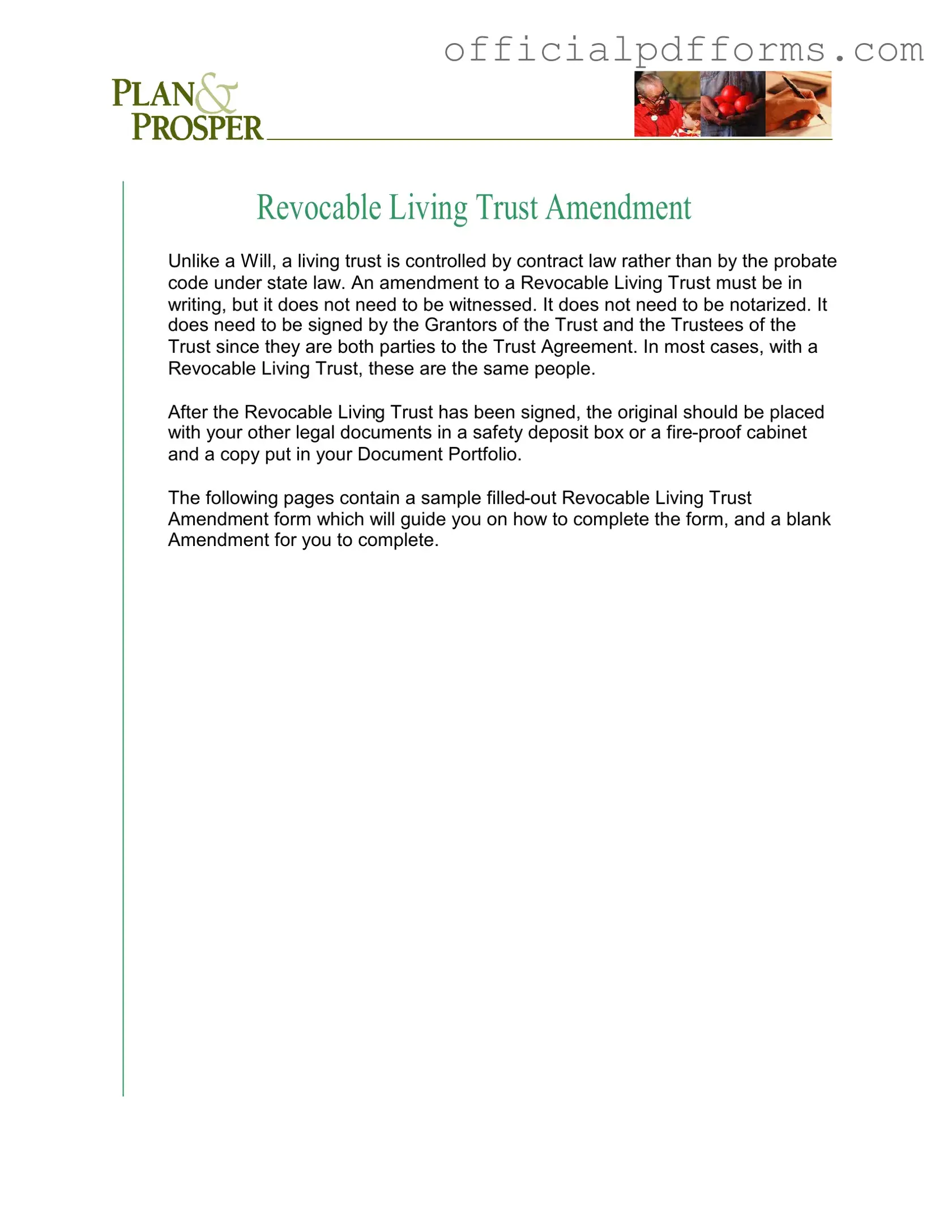Fill in a Valid Trust Amendment Form
The Trust Amendment form is a legal document used to modify the terms of a Revocable Living Trust. Unlike a Will, a living trust operates under contract law and does not require witnessing or notarization, though it must be signed by both the Grantors and Trustees. This article will guide you through the process of completing the form, ensuring that your trust reflects your current wishes.
To get started, fill out the Trust Amendment form by clicking the button below.
Access Form Online
